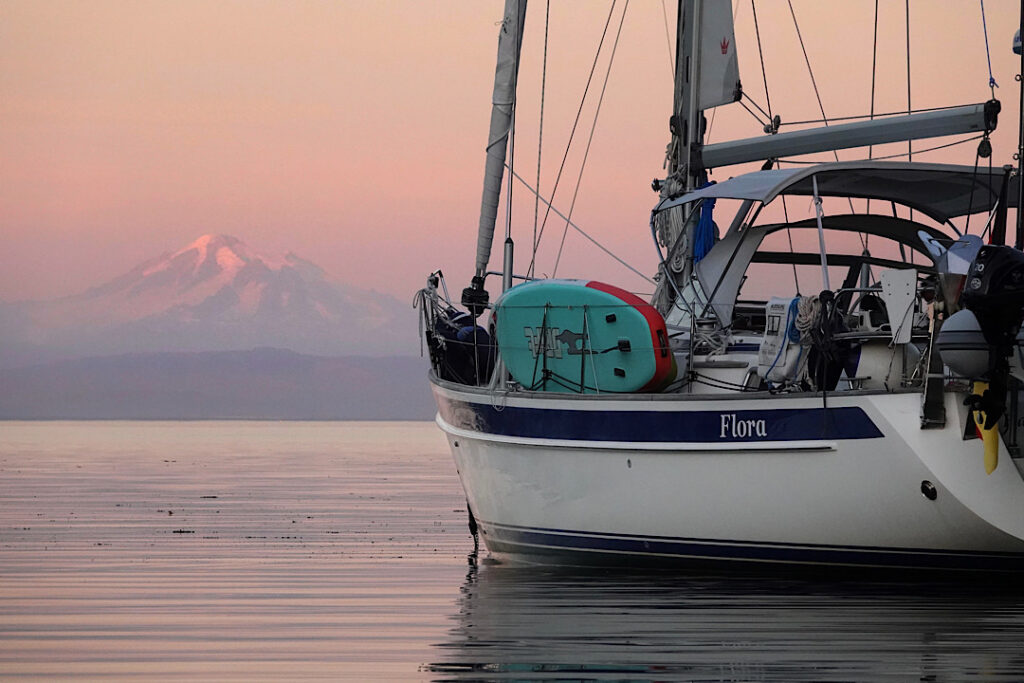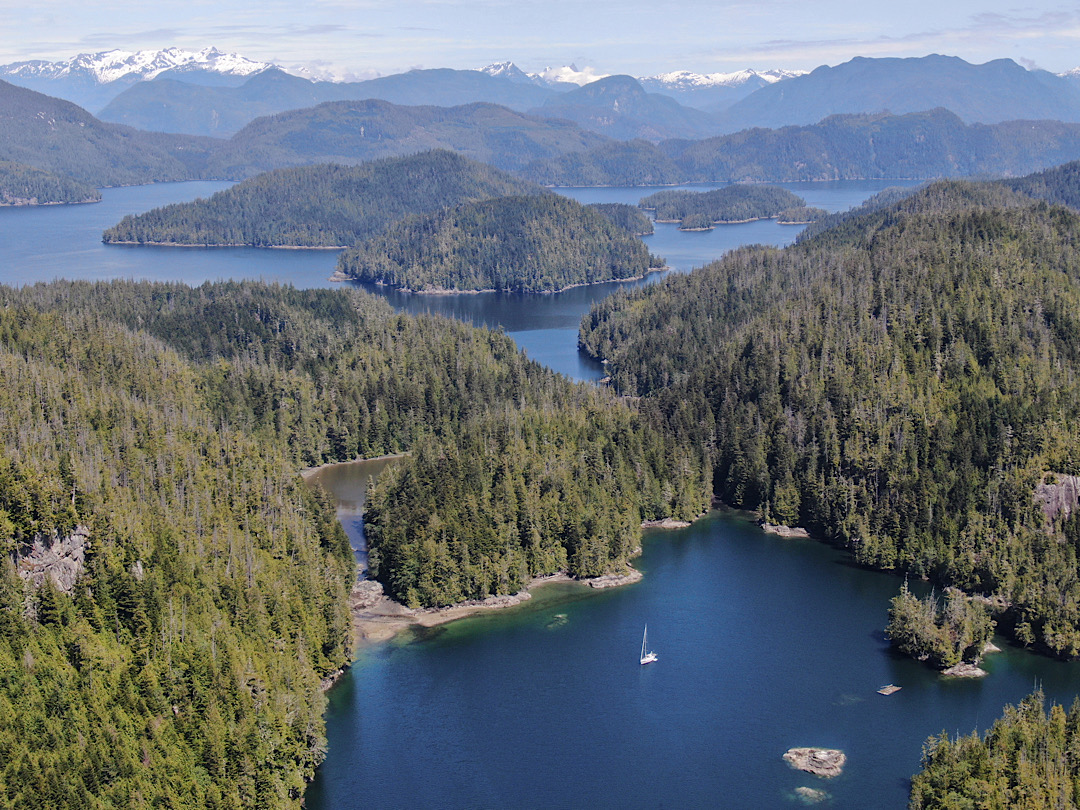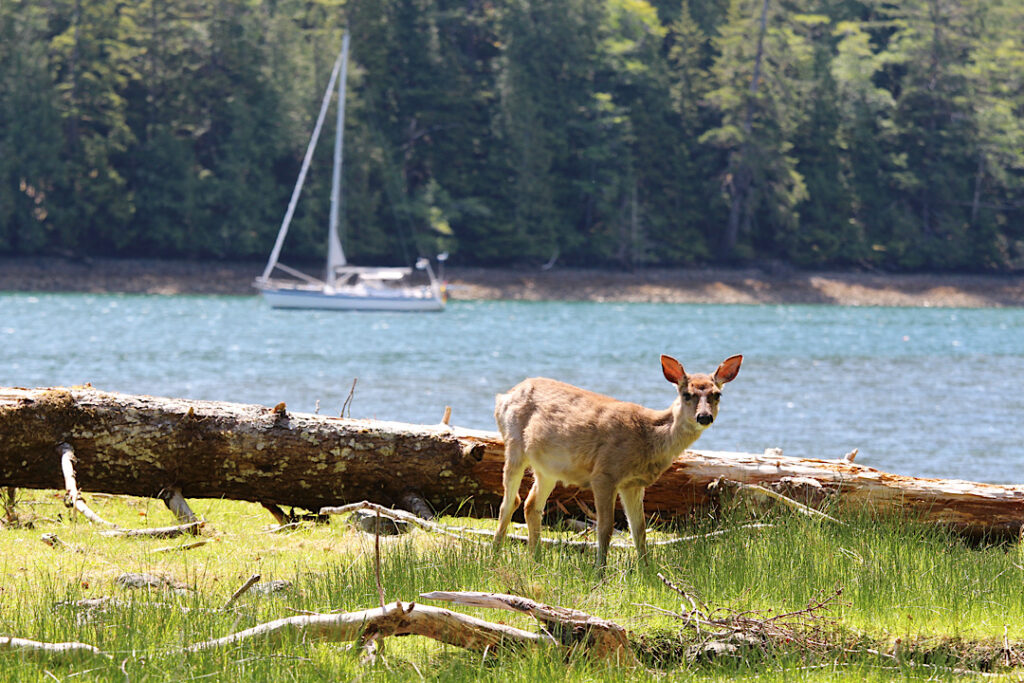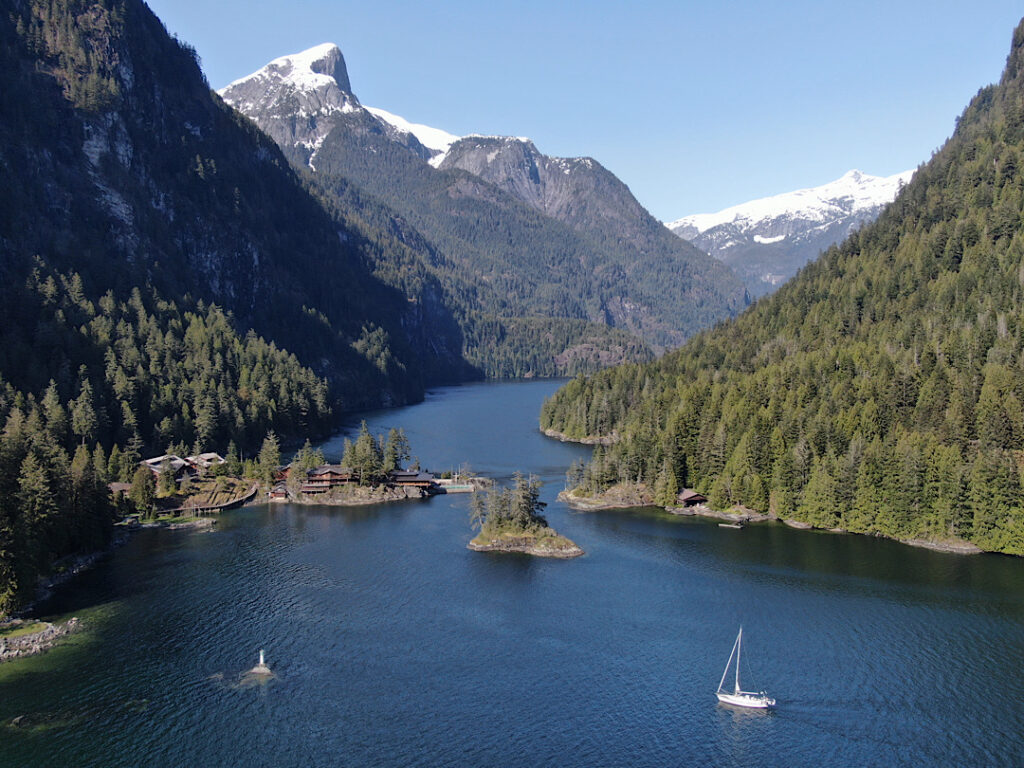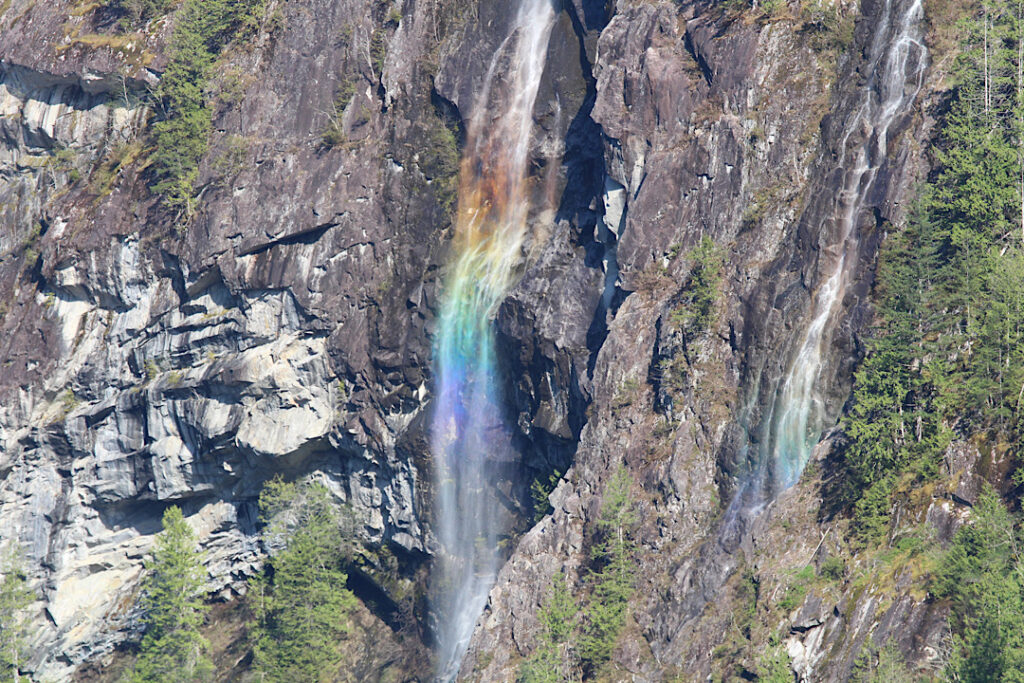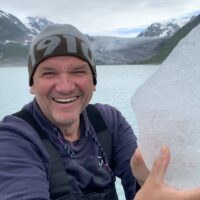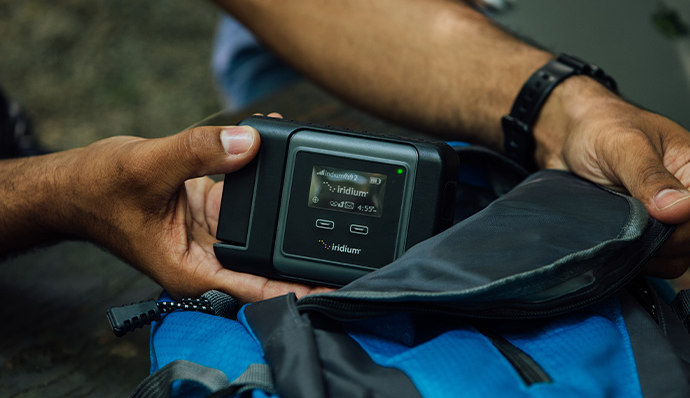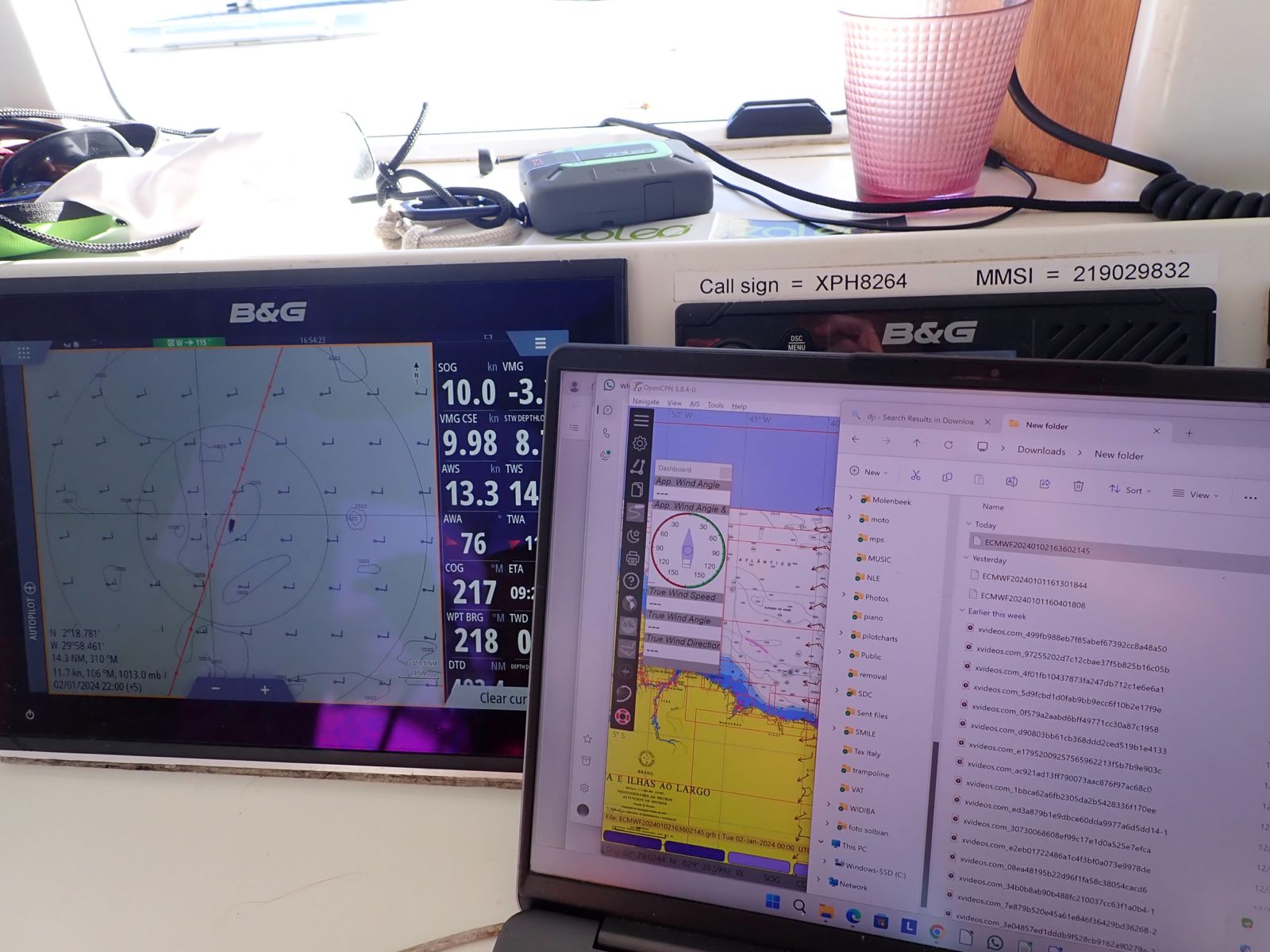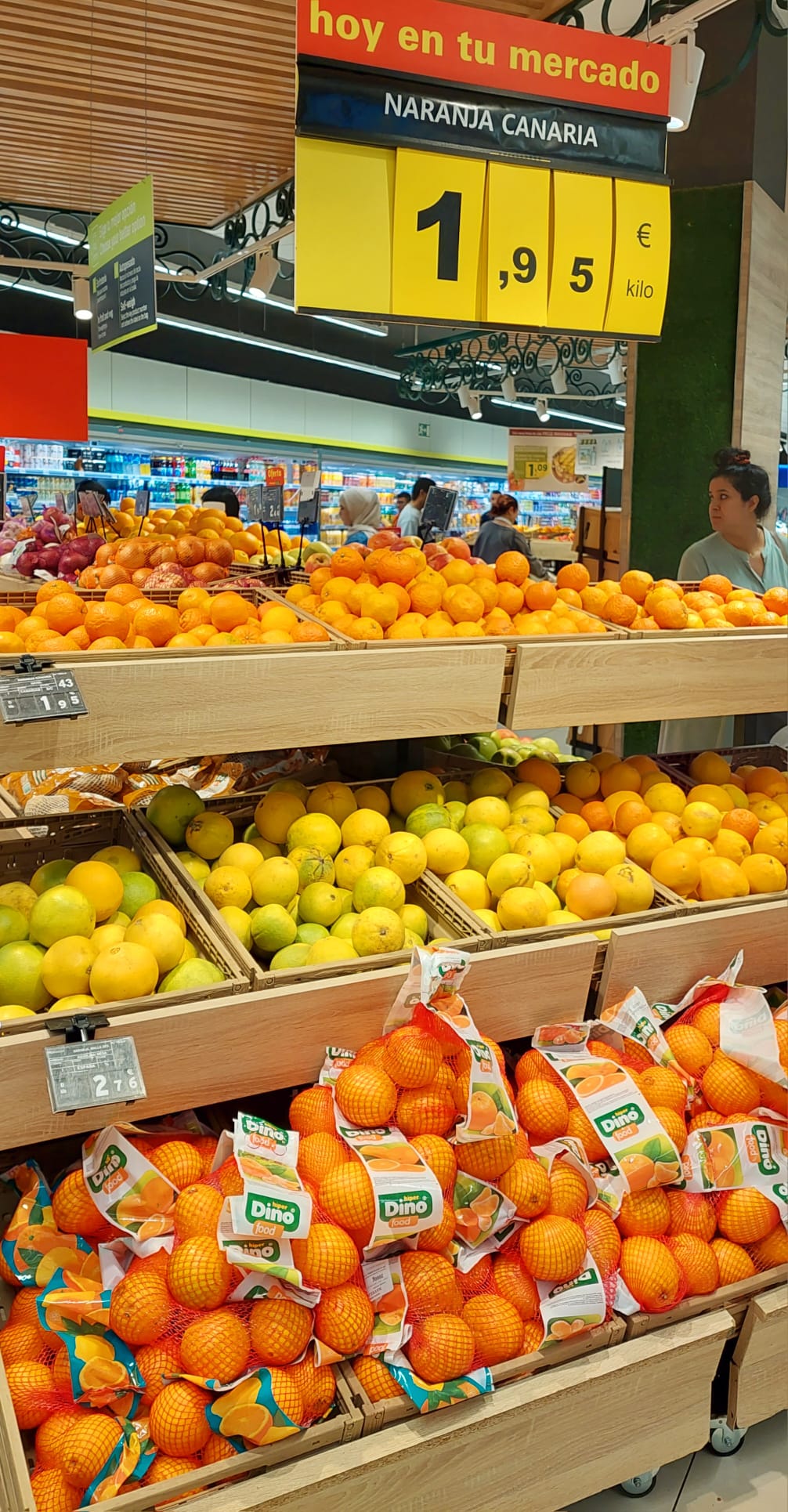British Columbia (BC) lies on the western coast of Canada. It is a vast and stunningly beautiful cruising ground. It offers countless anchorages and stretches from BC’s bustling capital Victoria, at the very southern end of Vancouver Island, all the way up to remote Haida Gwaii on the border with Alaska. Most of the 6,000 islands here remain uninhabited, and a wilderness of fjords, islands, bays, coves and lagoons are all just waiting to be explored by adventurous yachts and their crew.
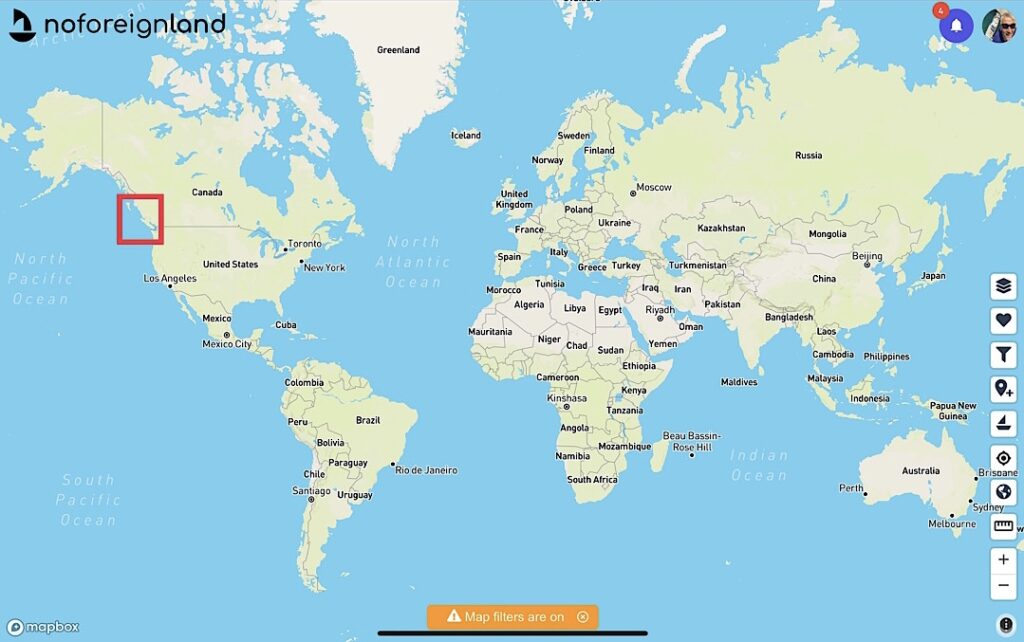
The following screenshot is taken from noforeignland.com. It shows how we saved the places we planned to visit to a list named British Columbia. Once saved, we used map filters to show them on the map, removing clutter and helping us to plan our sailing itinerary:
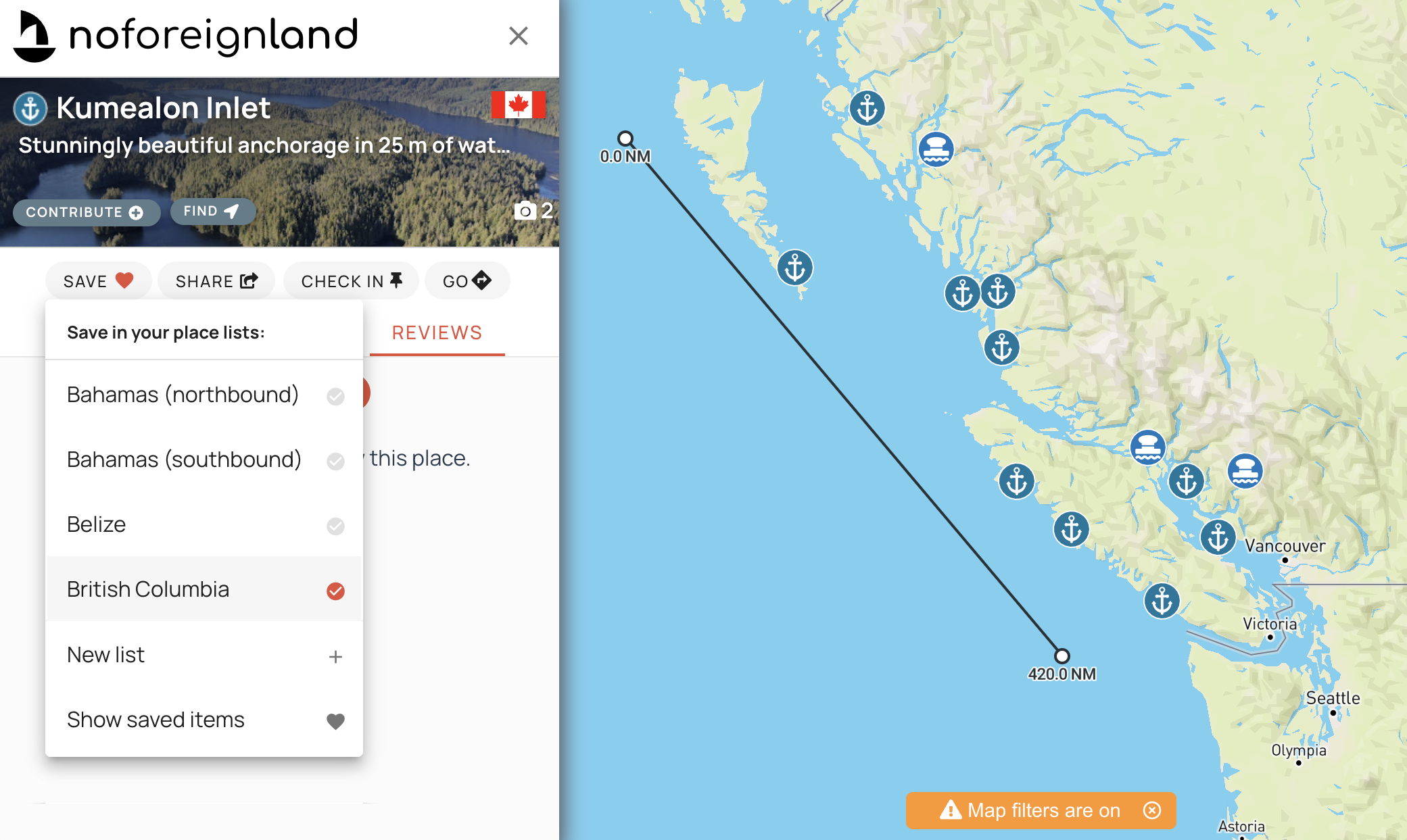
In this article we will include links to all the anchorages and harbors shown on our list – allowing you to build a list of your own should you want to visit some of them too.
Anchoring out
Cruising in BC is all about anchoring out. Once you are north of Campbell River you will find very few marinas and, apart from the comfort of an occasional fishing resort or a scattered public dock, dropping the hook in the protection of a secluded cove will become your norm.
The rocky coast seems to try everything it can to avoid forming a straight line: inlets, enchanted sandy beaches, and lush green fir covered hills are all framed by the towering snow capped mountains.
During the off-season, conditions on the west coast of the outer islands can be rough, as waves roll in from the Northern Pacific’s distant storms and low pressure systems. Year round, the immense tidal streams in the open channels between the outer islands require special attention: the Strait of Juan de Fuca, Queen Charlotte Sound, Johnson Strait, Hecate Strait and Dixon Entrance all have fearsome reputations. Apart from these open stretches though, the remainder of this jaw dropping cruising ground is connected by the famous Inside Passage. Weaving through the maze of waterways and islands between Seattle’s Puget Sound and Skagway in Alaska, the Inside Passage offers good protection for cruising boats.
Still, this area is not for the faint hearted. Tides regularly reach 5 meters (15ft), and as they flow around the bigger land masses, can create challenging currents. In some of the narrows, currents can reach as much as 16 knots. Careful planning to pass at slack tide is often required. If you see this as a challenge to your navigation skills rather than a drawback, then BC is perfect for you.
Kumealon Inlet and its surrounding area
Aside from the challenging currents, mornings can be very foggy in summer and early fall. One such morning in Kumealon Inlet resulted in us enjoying a late second breakfast under a fairytale light while waiting for visibility to improve (tap the photos to see them fullscreen):
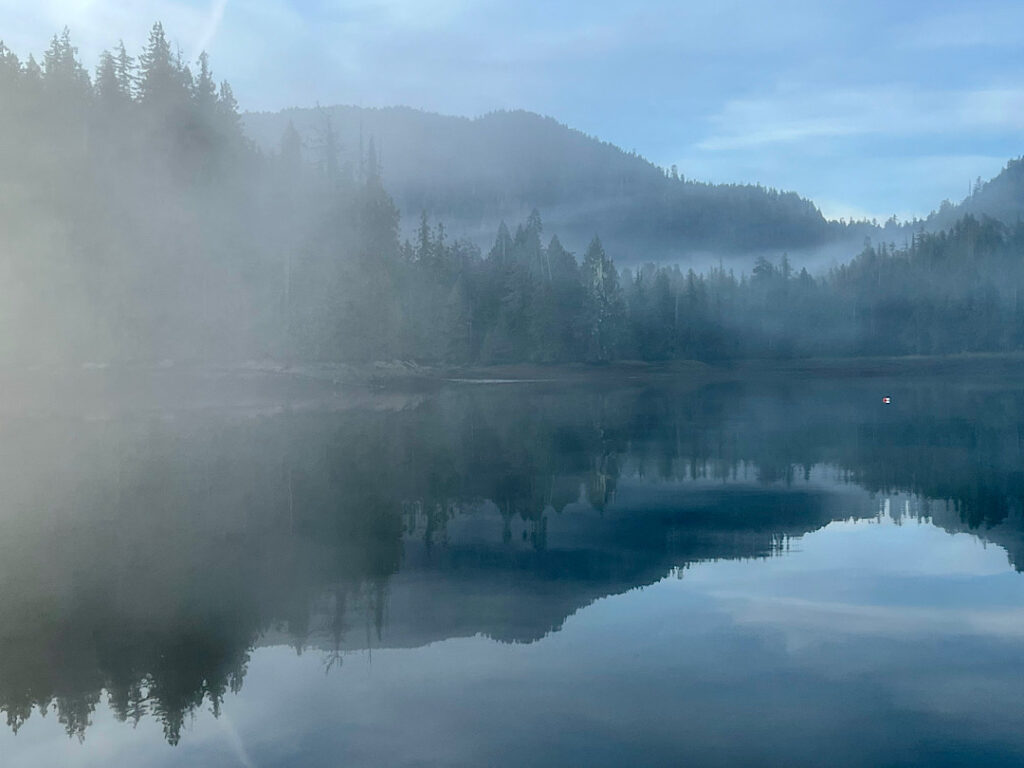

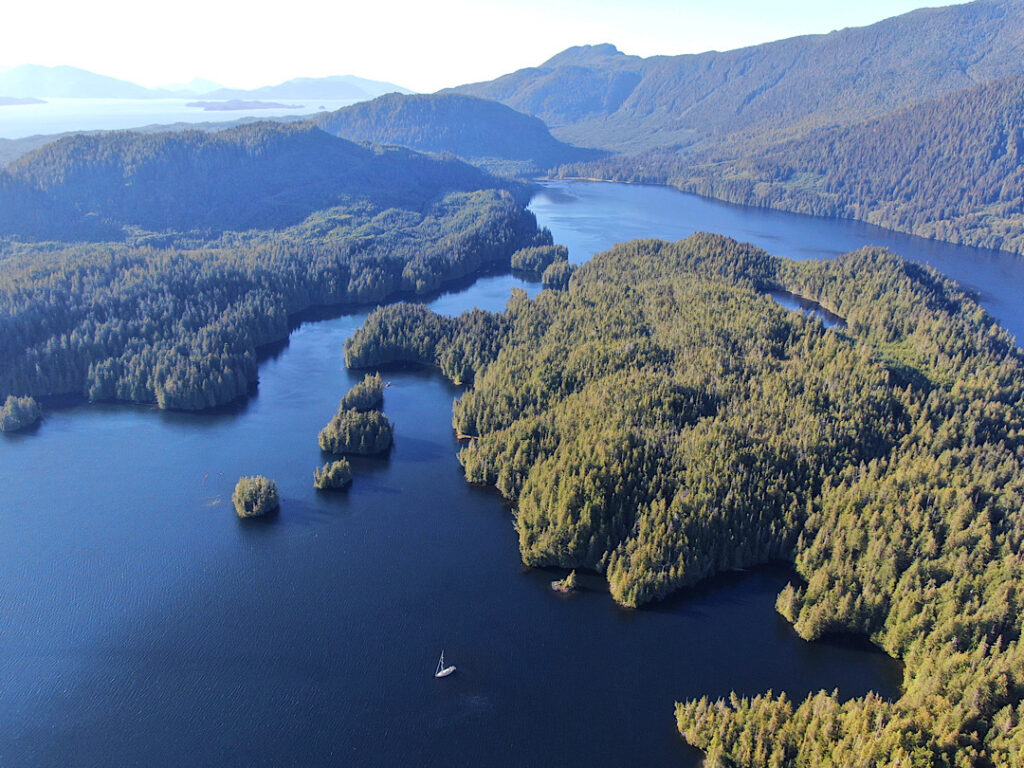
The wooded hillsides may appear to be untouched nature, but the forests are usually second growth; harvesting the trees to feed the demands of the worlds lumber and paper market is a big part of the Canadian economy. Boaters must always be on the lookout for tugboats with gigantic rafts, and must remain even more vigilant for the occasional logs that escape them:
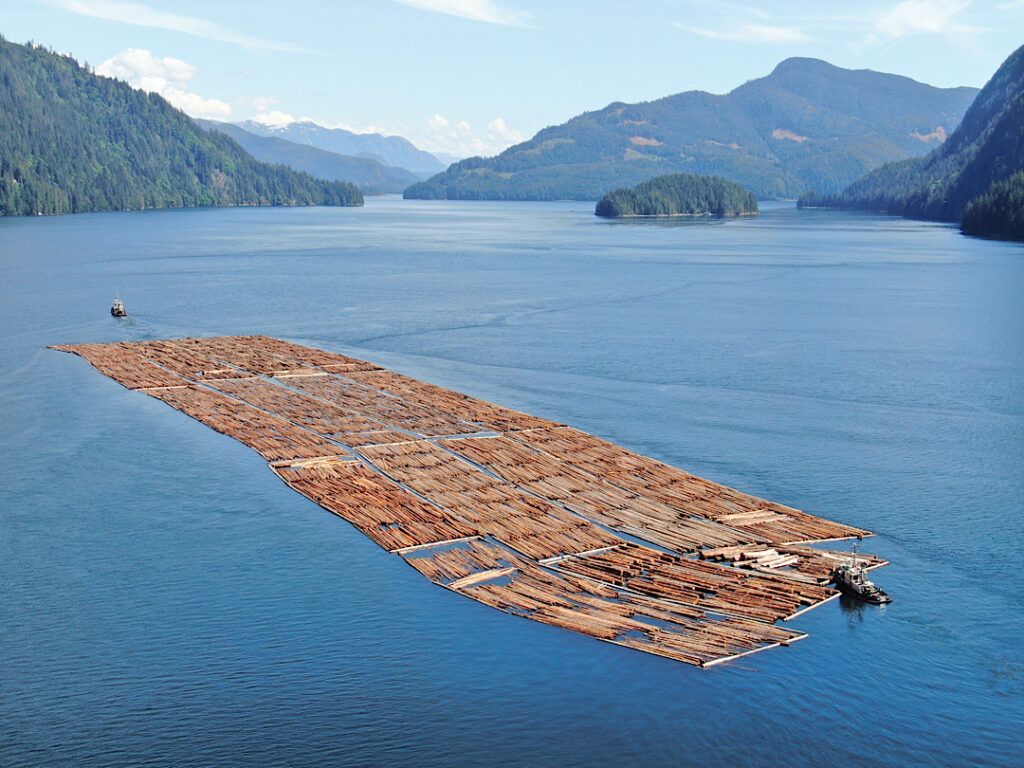
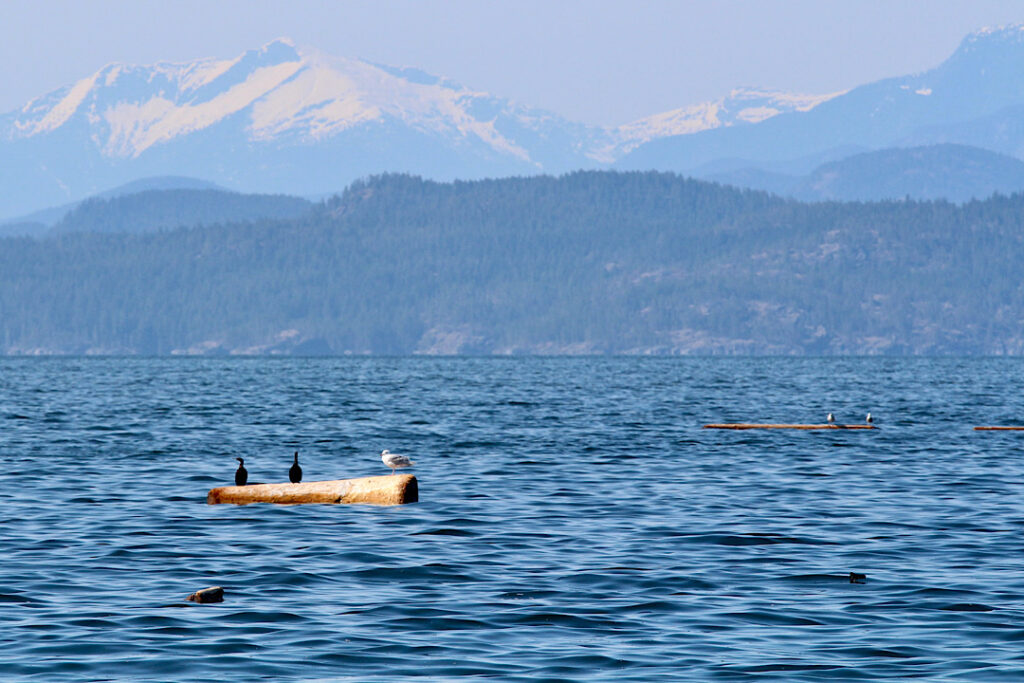
Logs aren’t always this considerately marked by seabirds hitching a free ride, so be aware. For us, this ruled out night passages, but of course that’s a personal choice.
Gwaii Haanas National Park Reserve
If you’re looking for old growth forest with trees that have witnessed centuries, you might want to visit Haida Gwaii. Gwaii Haanas National Park Reserve is not only a Canadian National Park but also a cooperatively managed heritage site for the indigenous Haida people. The park’s status was reached after Haida protests against logging activities in some of the last remaining old growth rainforest in the area. Heritage sites can now be visited by appointment with local Haida watchmen present on all the sites.
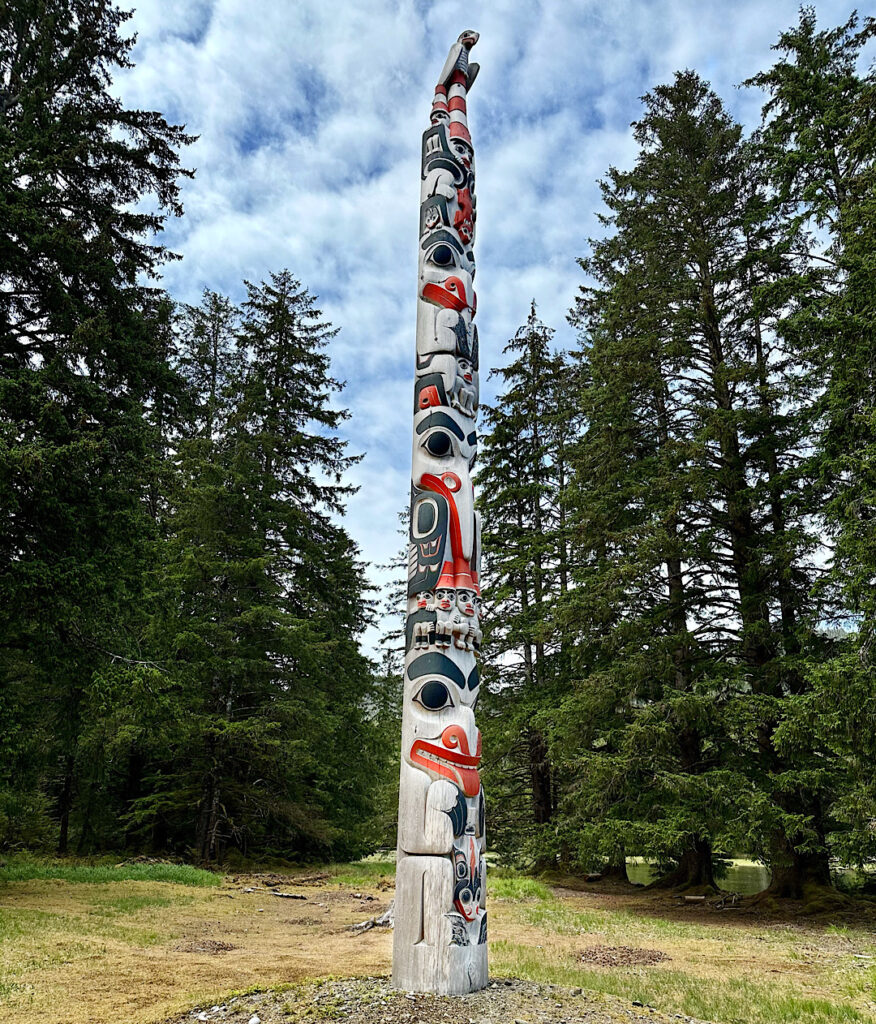
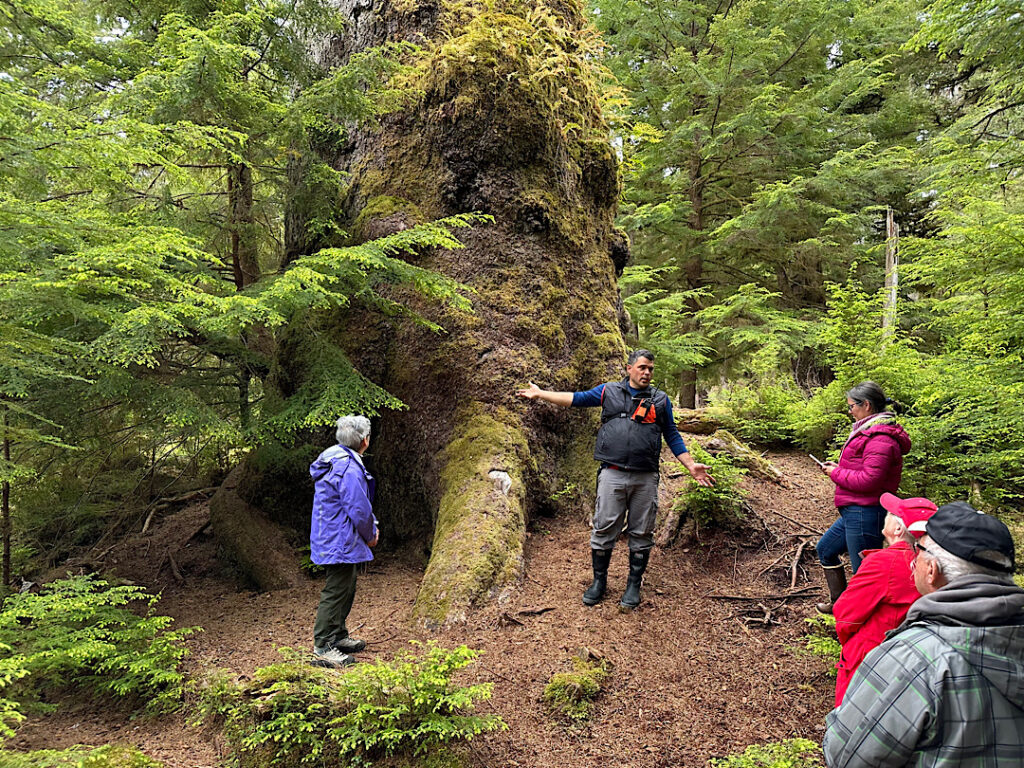
Apart from the watchman sites, there are numerous beautiful anchorages in Gwaii Haanas, and wildlife is plentiful, making shore excursions very rewarding.
Ikeda Cove
Sometimes the wildlife can make things a little too exiting. Like the afternoon we returned to our dinghy at Ikeda Cove only to find a black bear right next to it with her cubs, combing the exposed beach for something to eat.
Bishop Bay
Speeking of wildlife: bald eagles and whales are abundant in BC, and sightings are regular. One afternoon while sitting in the comfort of the hot springs at Bishop Bay, we even observed humpback whales swimming in the bay.


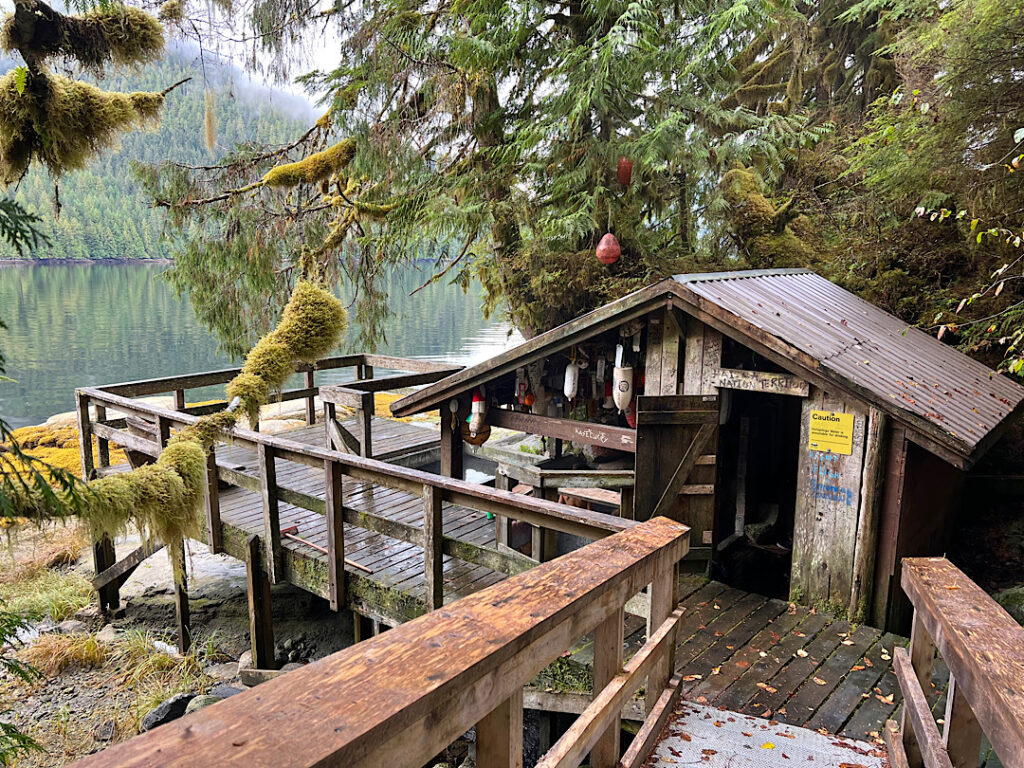
Codville Lagoon
Those sailing the tropics might have a hard time imagining how wonderful a hot spring feels when cruising in a temperate climate, but soaking in warm water is not restricted to the hot springs. Another opportunity for a bath lies in one of the many freshwater lakes. Sometimes they can be reached with a short hike from an anchorage, like the ones near Codville Lagoon. Here the brown water of the shallow lake heats up quickly and is lined with perfect sandy beach. The trail to the lake requires a little climbing, and starts right next to the anchorage.
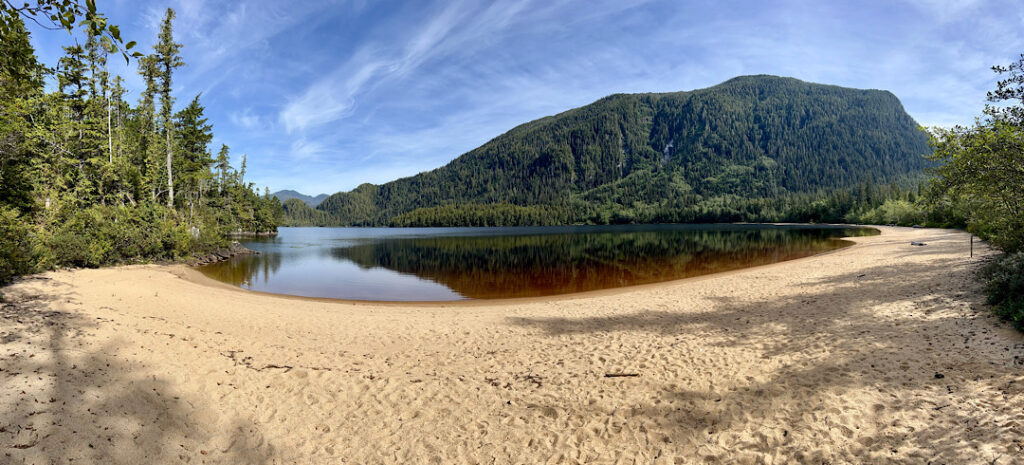
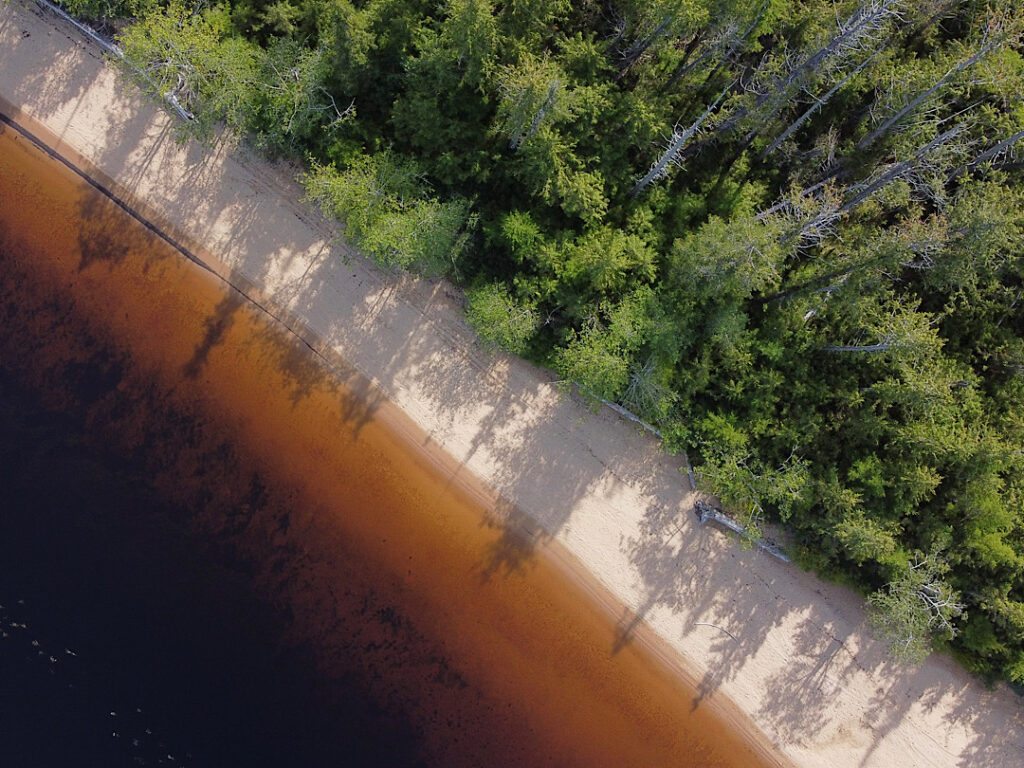
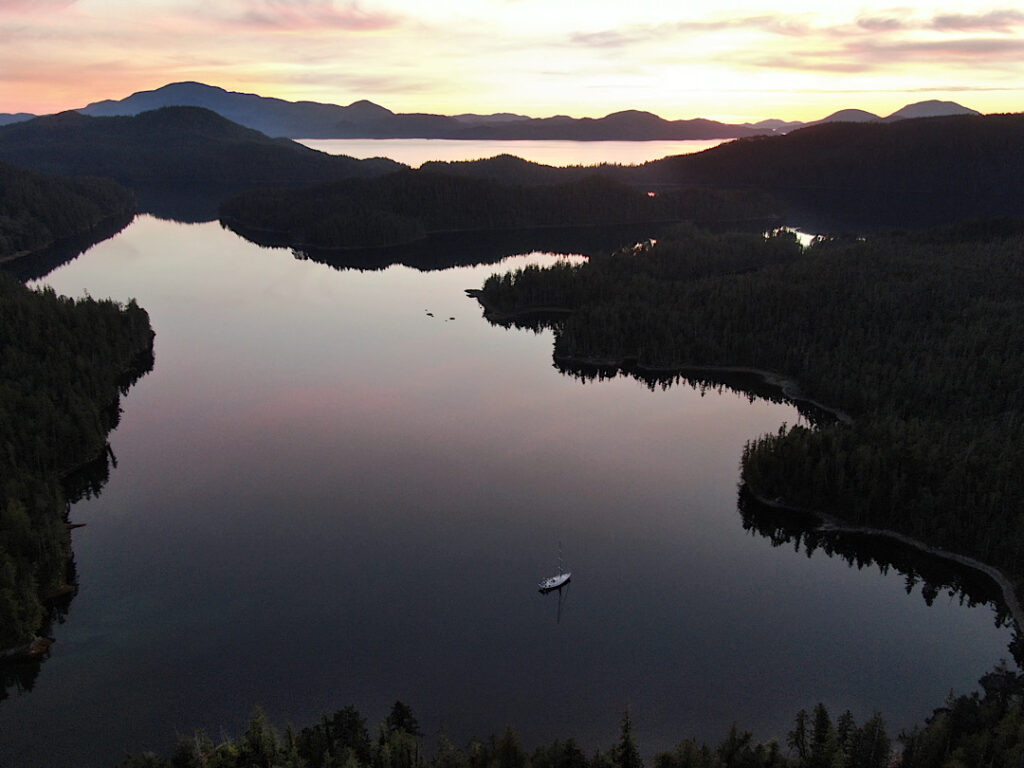
The McMullin group
Not all of BC is covered in dark green forest. Although only a fair weather anchorage, the less known McMullin group is not to be missed. To explore these little islets, you need to leave the main route of the Inside Passage. For most of the way small islands will offer you protection from the west, and when you arrive you will be rewarded with this:
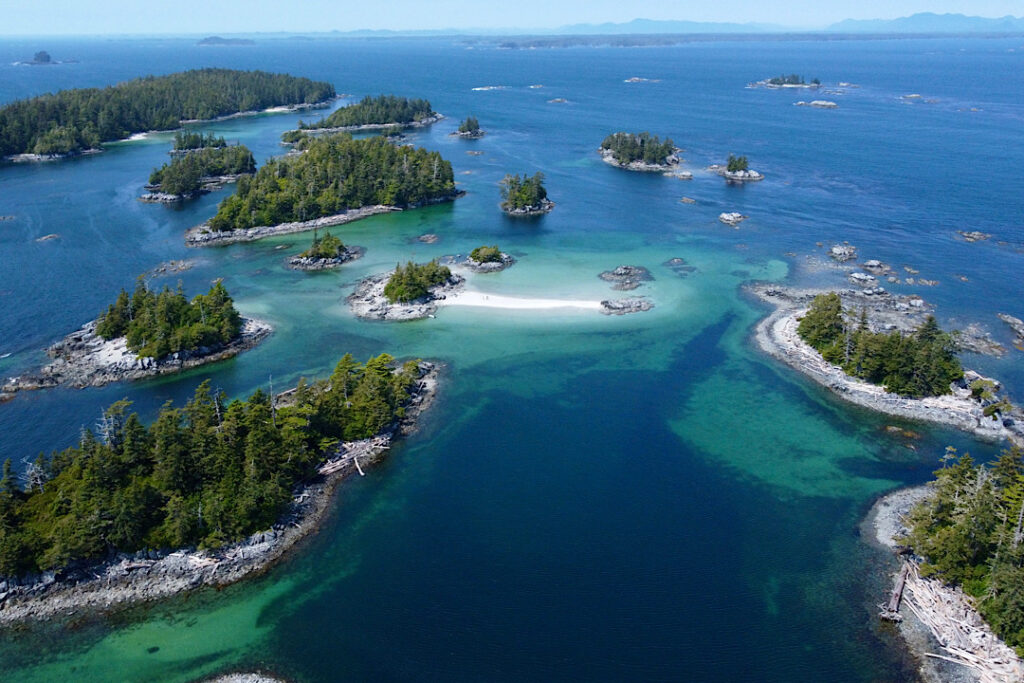
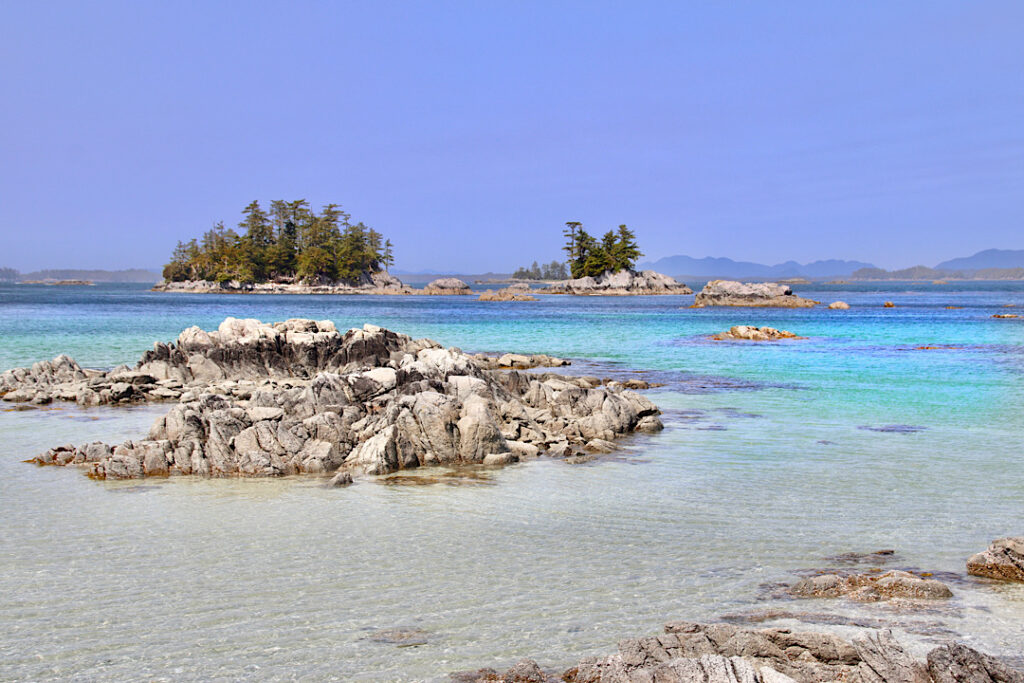
The Princess Louisa Inlet
At the opposite extreme from the McMullin Group, one of the best known places in coastal BC is the Princess Louisa Inlet, home to some amazing waterfalls. Entering the Jervis Inlet fjord and following the deep natural waterway for some 40NM, this winding route will take you right up to the alpine mountains of the mainland. Get your timing right for the narrow entrance through Malibu Rapids (which keeps the cruise ships out) and enter a world of steep cliffs and powerful waterfalls.
As it is a marine park, no anchoring is permitted but there is a public dock and some of the mooring balls are positioned just in front of one of the waterfalls.
Desolation Sound
Equally well known, and slightly easier to reach, is Desolation Sound. When Captain George Vancouver chose its name in 1792, he must have been in a very bad mood. Nowadays, word of its beauty has spread and in peak season, places like Prideaux Haven get what locals might call crowded. Not so when we were there in late April:
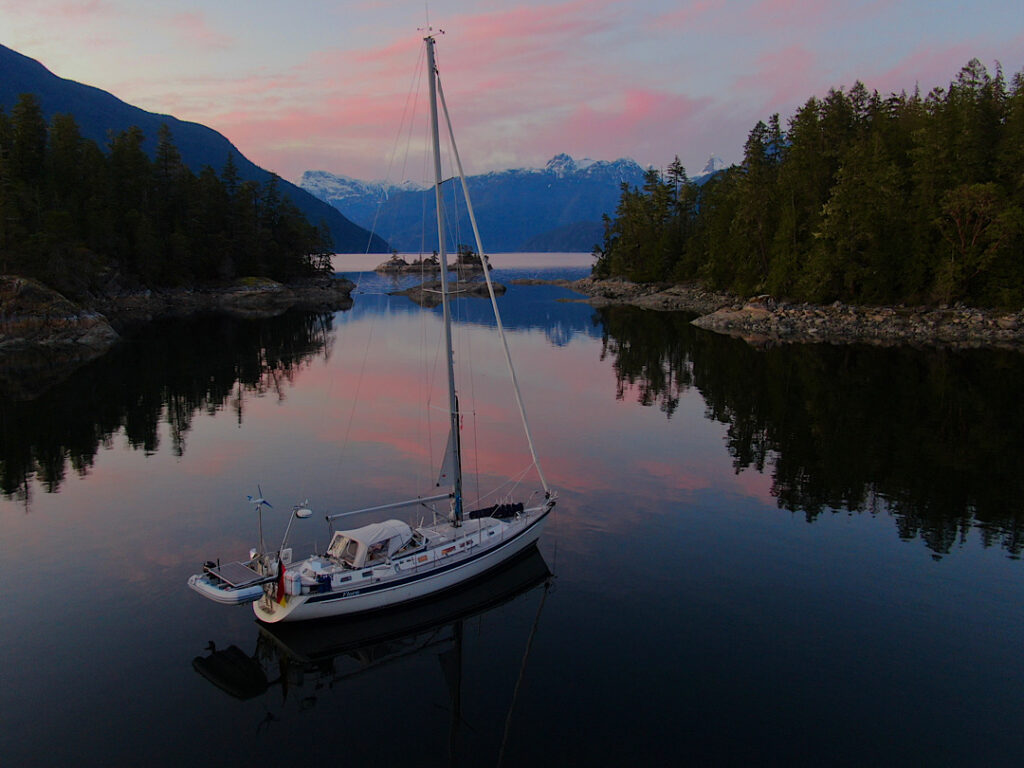
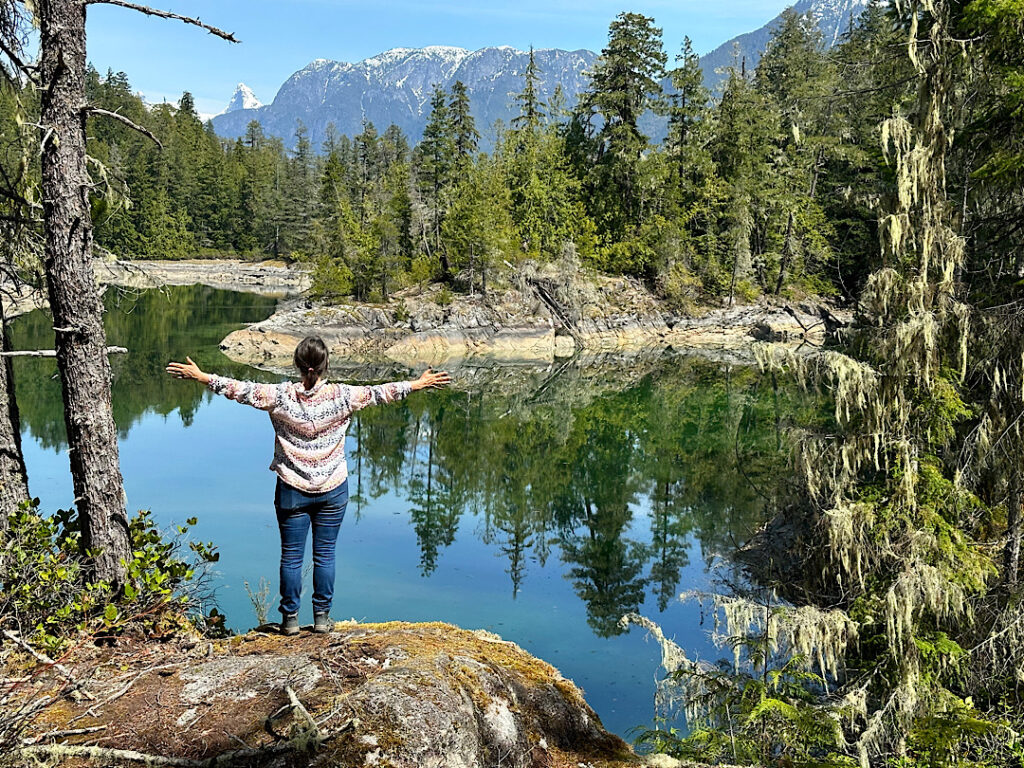

In well visited anchorages like this, securing a shore line from the boats stern is recommended during peak season. Keep an eye out for pieces of chain attached to a yellow marker on the cliffs or the rocky shore. Tie to them, and leave enough line to allow for a drop or rise of the tide. The chains are easy to reach and will help avoid chafing your lines on the rocks. Another advantage of using the chains, is that you’ll often find otherwise hard to spot trails, like we did here at the Jedediah Island anchorage:
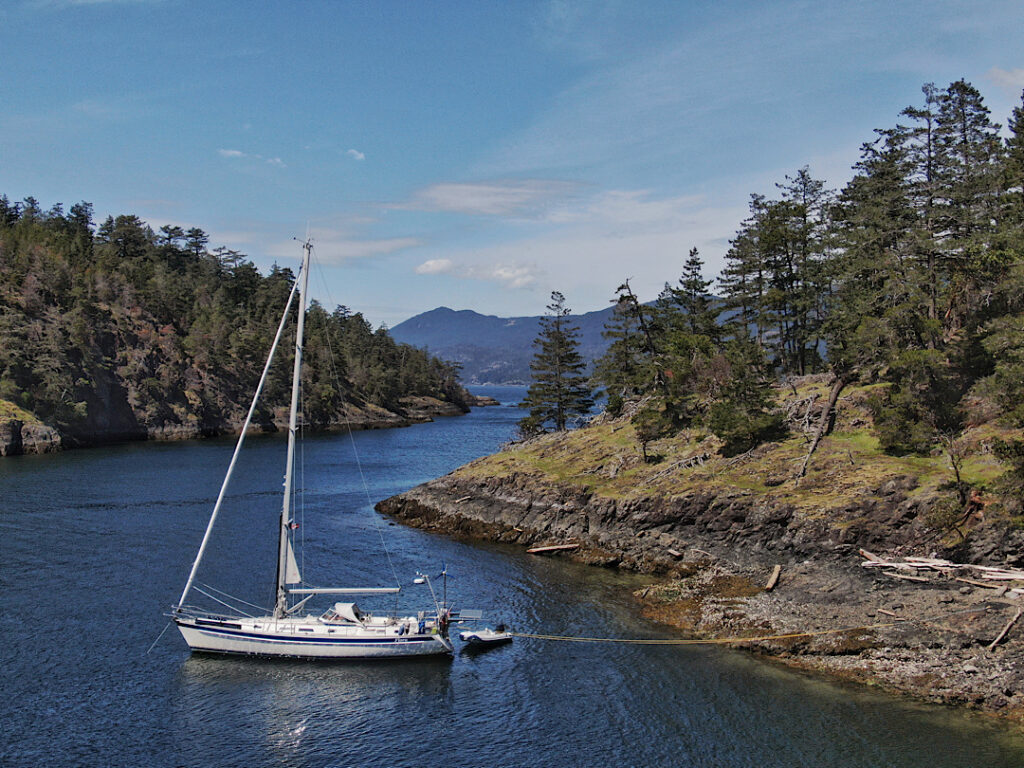

The Lighthouses
Another specialty of this region is its lighthouses. They are usually kept in mint condition and many are still manned with real (yes human!) lighthouse keepers. When we anchored in Friendly Cove on the western side of Vancouver Island, lighthouse keeper Doug, and his assistant Donna, even took the time to explain their work and the technology involved.

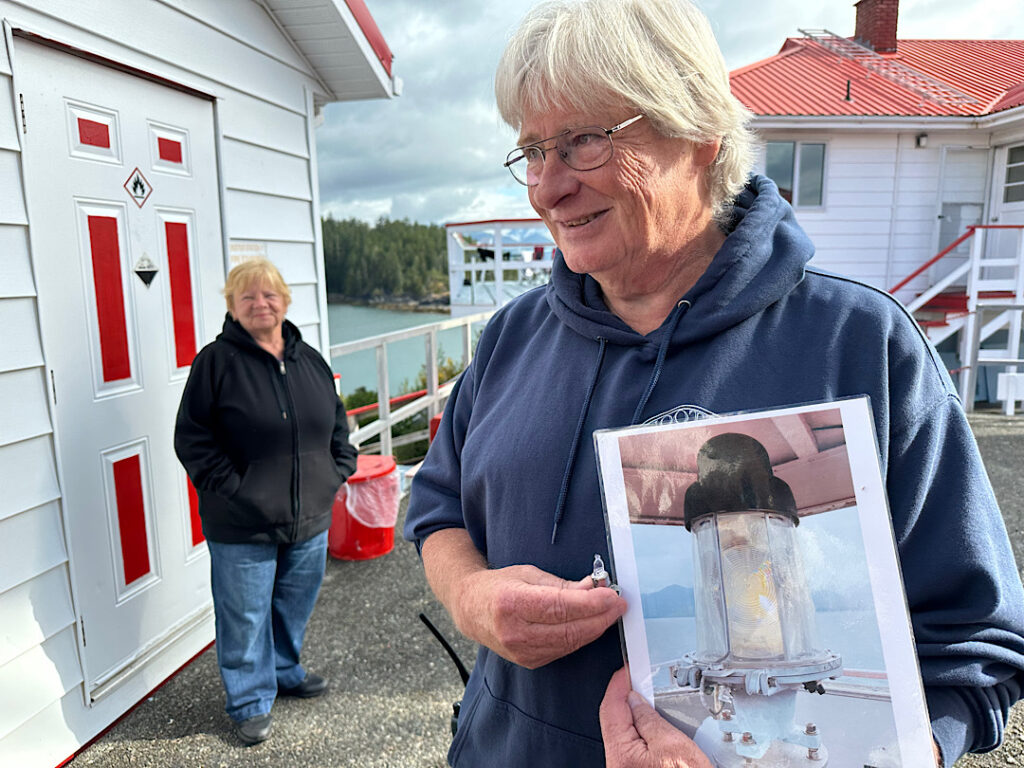
Remote places in BC can often only be reached by boat or sea planes. So while visiting the lighthouse, we weren’t too surprised to see one land and then launch again right in front of our boat.
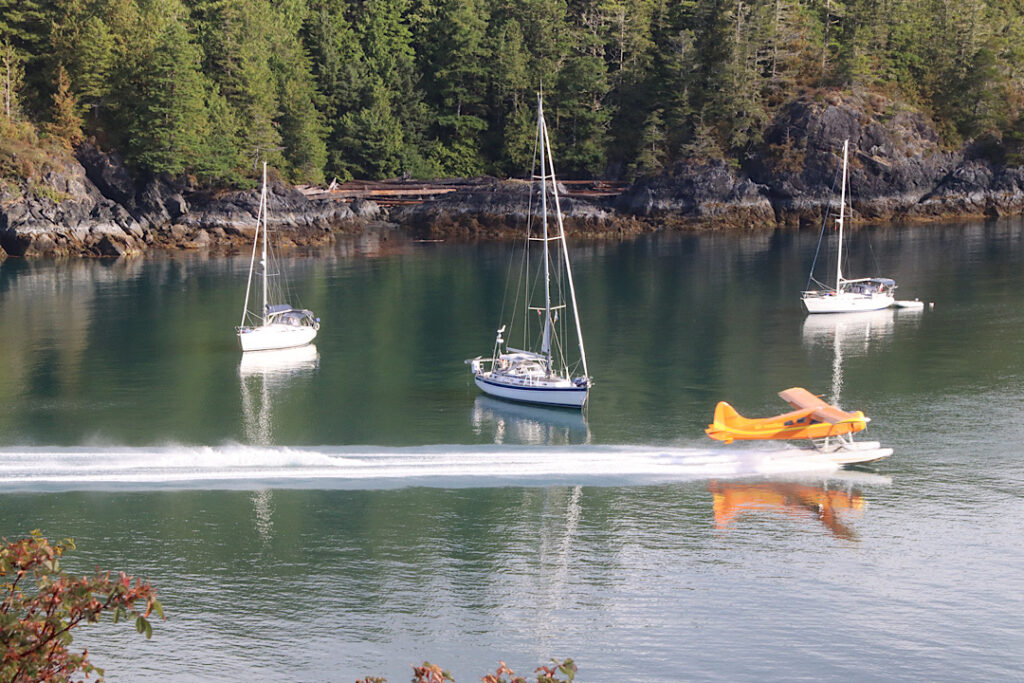
Broken Island Group
If weather permits sailing around the West coast of Vancouver Island, then there are plenty of other gems to discover. The archipelago of the Broken Island Group with its bounty of protected anchorages is one such place.
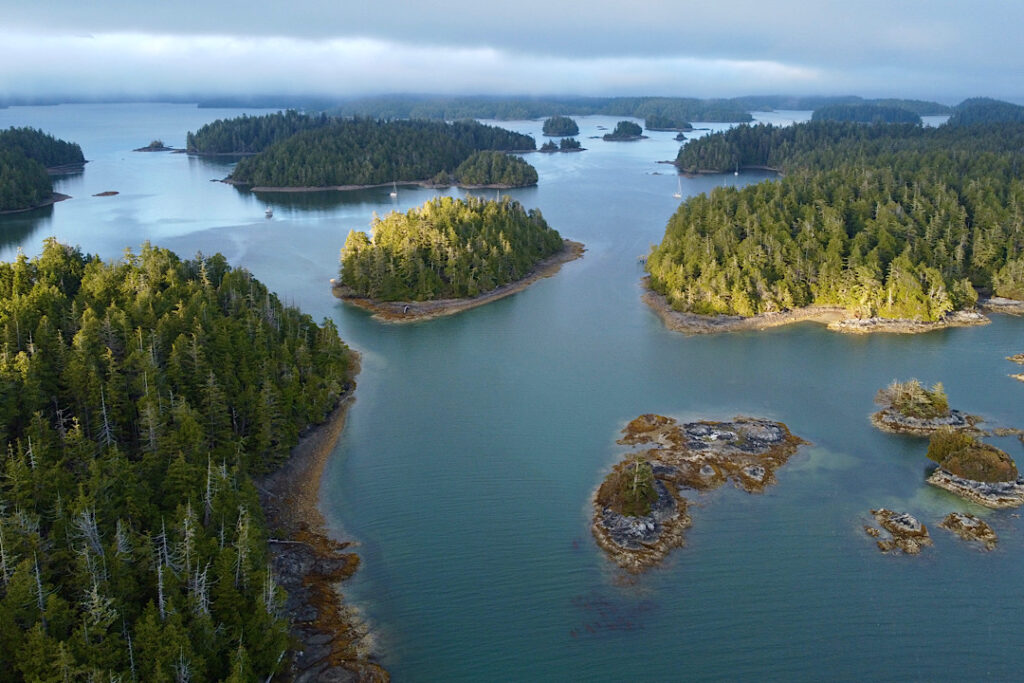
The Bunsby Islands are another remarkable option. They too have amazing anchorages but more importantly, it was here that a sea otter population was re-established in BC after these fascinating animals had been hunted to near extinction for their fur.

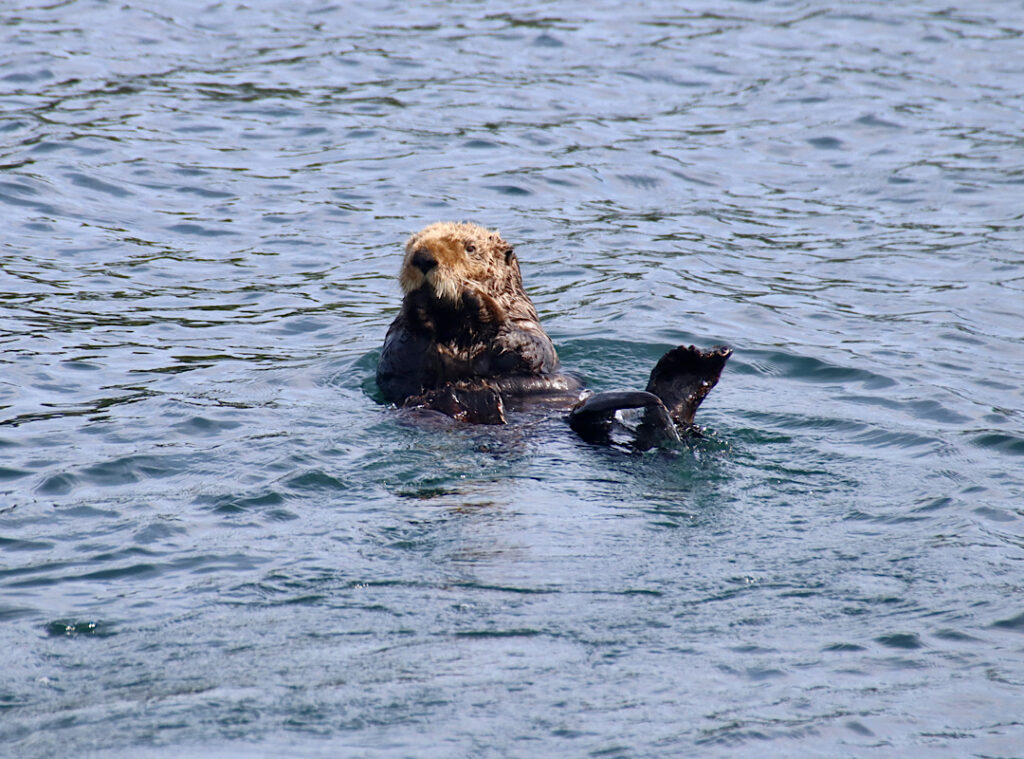
Fury Cove at Cape Caution
There are one or two dreaded stretches of water along the Inside Passage. One such place, Cape Caution, was aptly named by Captain Vancouver after his ship Discovery ran aground there and was nearly lost. Our favorite anchorage in this area is at the northern end of this stretch in Fury Cove. You can anchor safely here as the shallow narrow openings keep the swell and the waves out. From the protection of the cove you can check the conditions out in the strait through the “windows” of the anchorage.
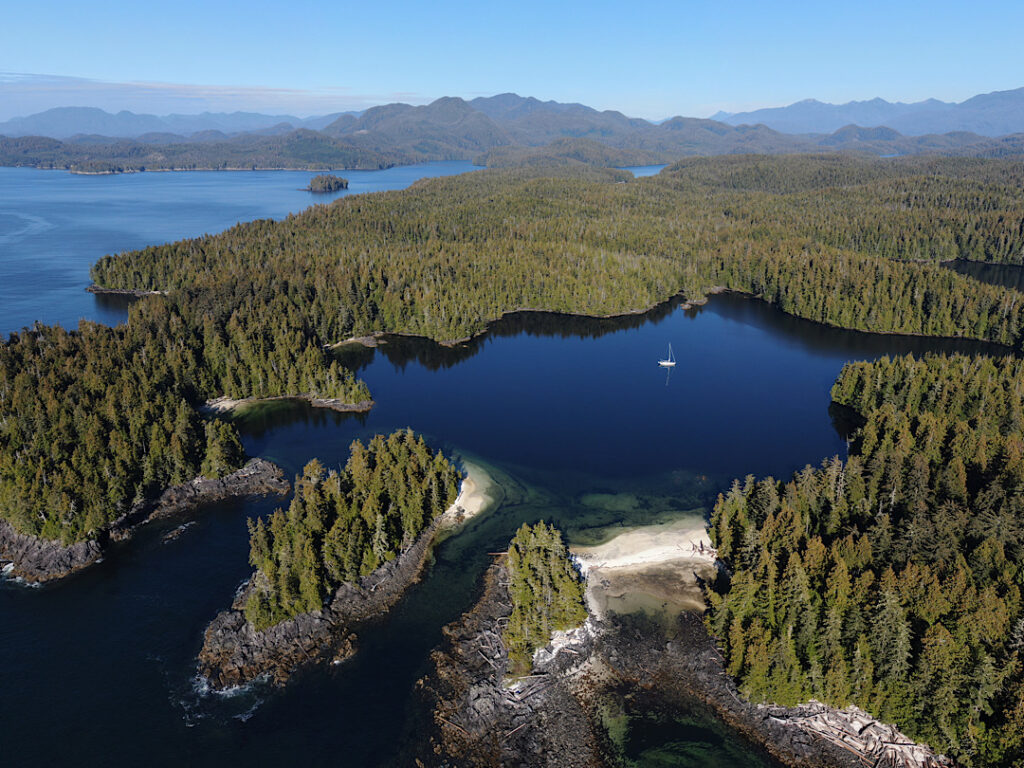
The Broughtons
About 50NM south in Queen Charlotte Strait, you can take a detour from the Inside Passage and explore the maze of The Broughtons. An iconic area for cruising BC.
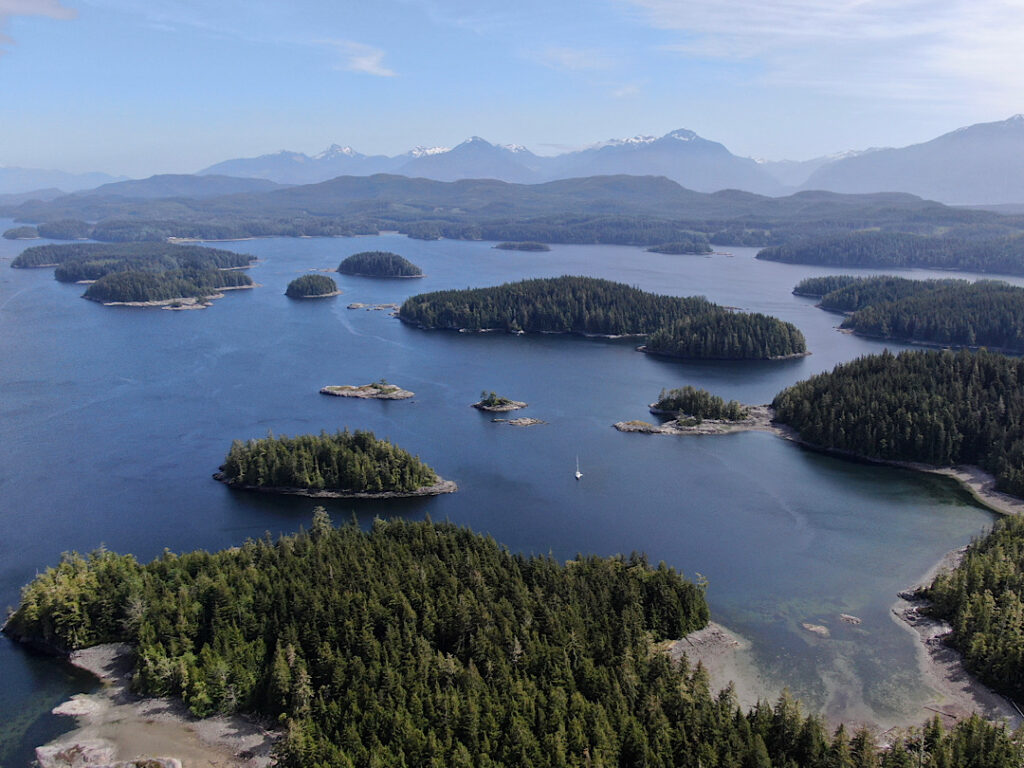
Extreme currents
Whether heading north or south, the main route through Seymour Narrows requires careful timing to avoid a potential 16KN current. Alternative routes will mean less extreme currents, but they all lead through various series of narrows and rapids, making it virtually impossible to pass them all at slack water.
We found the public dock at Shoal Bay a perfect place to rest up and wait for favorable tides. If you prefer the hook, anchoring is possible on both sides of the dock. Just make sure you keep your distance from shore – it’s called Shoal Bay for a reason. And, as you may come to expect by now, it comes complete with a stunning view into Phillip’s Arm fjord and has a super friendly and helpful couple running the small lodge nearby.
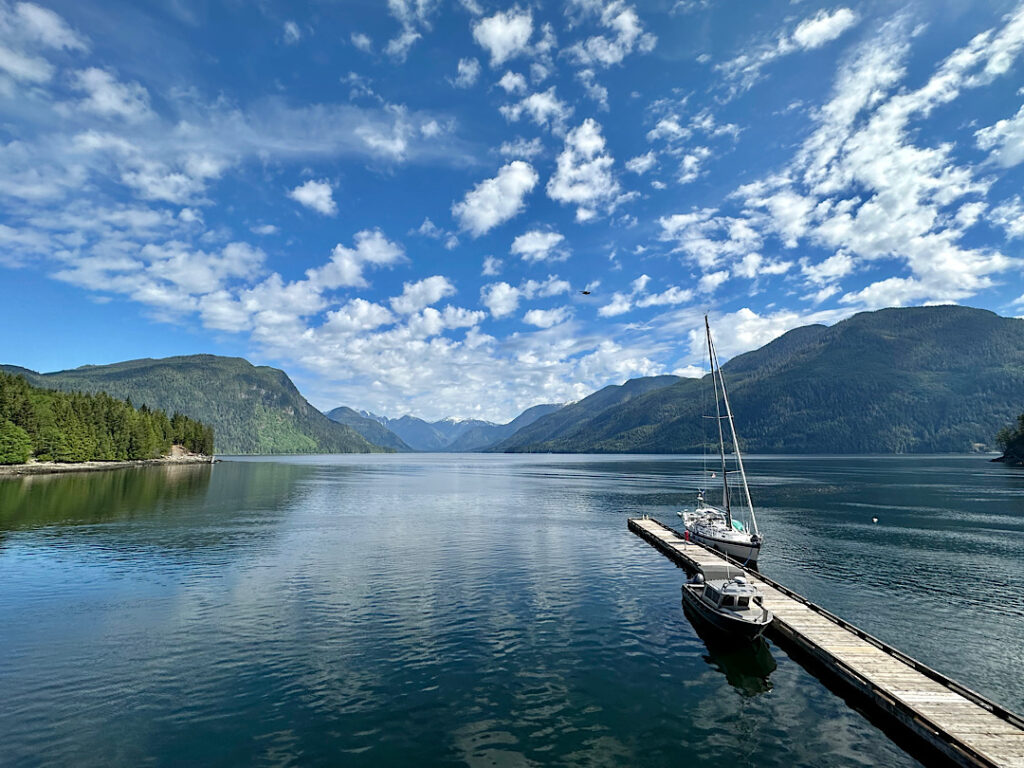
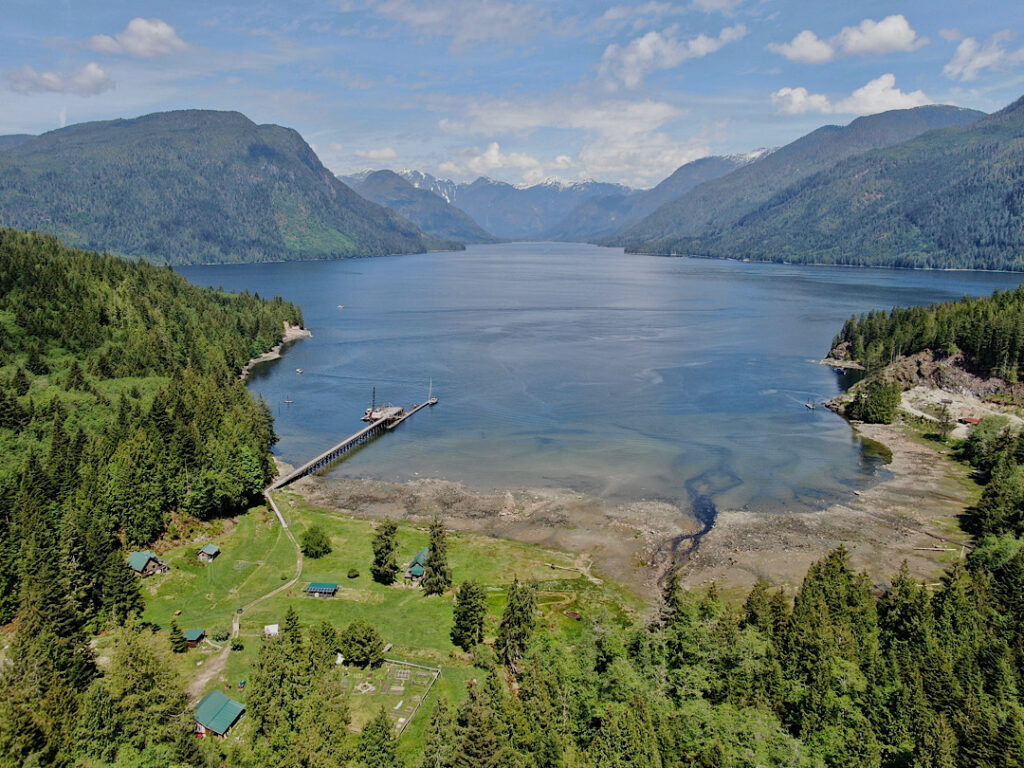
Last but not least on our very personal list of favorites is Narvaez Bay, on Saturna in the Gulf Islands. Due to the vicinity of the big cities of Victoria and Vancouver, the Gulf Islands can be quite busy in summer. But Saturna right on the border with the United States seems to have remained a little out of focus, and there’s a good chance of finding a calm spot even in the height of the sailing season. Here you can enjoy wonderful hikes around the island followed by a tranquil sunset with amazing views of Mount Baker in the far distance.
